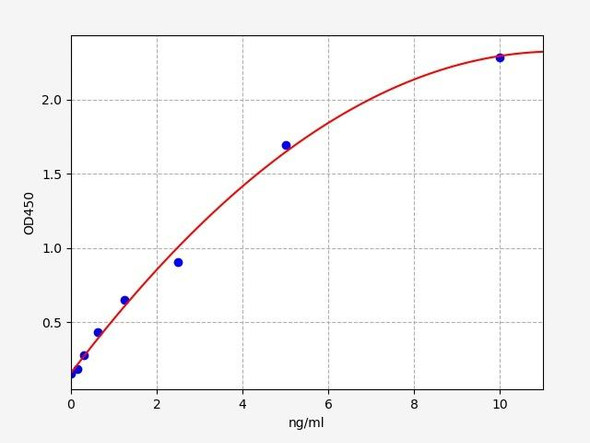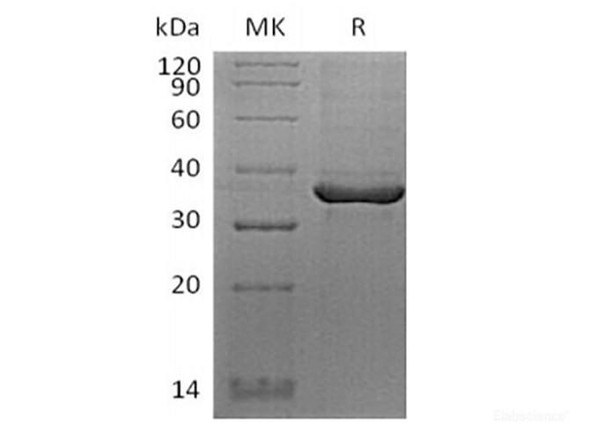Description
| Product Name: | Human VEGF Receptor 2/VEGF R2/FLK-1/KDR (C-6His-Avi) Biotinylated |
| Product Code: | RPES6319 |
| Size: | 20µg |
| Species: | Human |
| Expression Host: | HEK293 Cells |
| Synonyms: | VEGFR2, VEGF R2, Vascular endothelial growth factor receptor 2, KDR, VEGFR-2, Fetal liver kinase 1, FLK-1, Kinase insert domain receptor, Protein-tyrosine kinase receptor flk-1 |
| Mol Mass: | 86.1 kDa |
| AP Mol Mass: | 120-150 kDa |
| Tag: | C-6His-Avi |
| Purity: | > 95 % as determined by reducing SDS-PAGE. |
| Endotoxin Level: | < 1.0 EU per μg of the protein as determined by the LAL method. |
| Bio Activity: | Testing in progress |
| Sequence: | Ala20-Glu764 |
| Accession: | P35968 |
| Storage: | Generally, lyophilized proteins are stable for up to 12 months when stored at -20 to -80°C. Reconstituted protein solution can be stored at 4-8°C for 2-7 days. Aliquots of reconstituted samples are stable at < -20°C for 3 months. |
| Shipping: | This product is provided as lyophilized powder which is shipped with ice packs. |
| Formulation: | Lyophilized from a 0.2 μm filtered solution of PBS, pH 7.4. Normally 5 % - 8 % trehalose, mannitol and 0.01% Tween80 are added as protectants before lyophilization. Please refer to the specific buffer information in the printed manual. |
| Reconstitution: | Please refer to the printed manual for detailed information. |
| Background: | Human Vascular endothelial growth factor receptor 2(KDR, VEGFR-2) is a member of the class III subfamily of receptor tyrosine kinases (RTKs). KDR is involved in a number of fundamental biological processes such as the regulation of angiogenesis, vascular development, vascular permeability, and embryonic hematopoiesis. It also plays an essential role in promoting proliferation, survival, migration and differentiation of endothelial cells, reorganization of the actin cytoskeleton. VEGFR2 is identified as the receptor for VEGF and VEGFC and an early marker for endothelial cell progenitors, whose expression is restricted to endothelial cells in vivo.The adaptor protein SHB has been shown to interact with VEGFR2 in receptor tyrosine kinase signaling. In addition, VEGFR2 is able to interact with HIV-1 extracellular Tat protein upon VEGF activation, and seems to enhance angiogenesis in Kaposi's sarcoma lesions. VEGF R2 is thought to be the primary inducer of VEGF-mediated blood vessel growth, while VEGF R3 plays a significant role in VEGF-C and VEGF-D-mediated lymphangiogenesis. |






